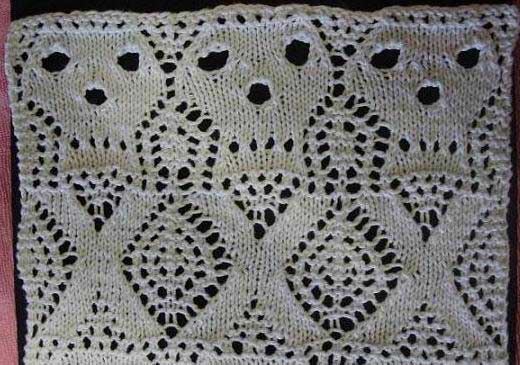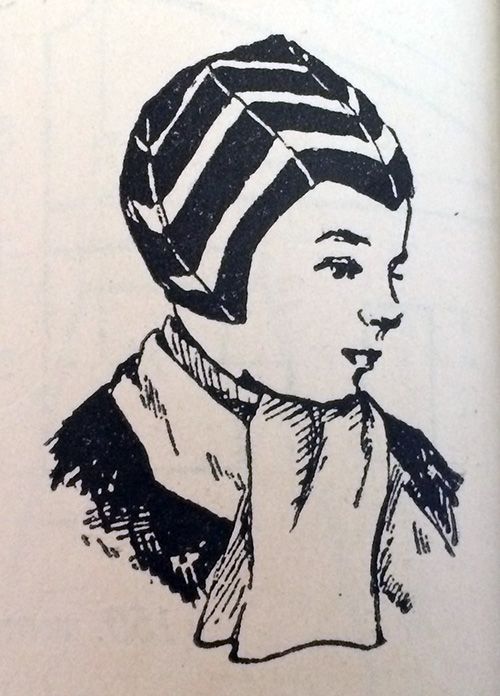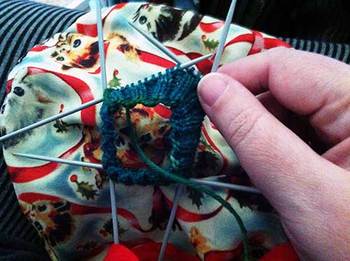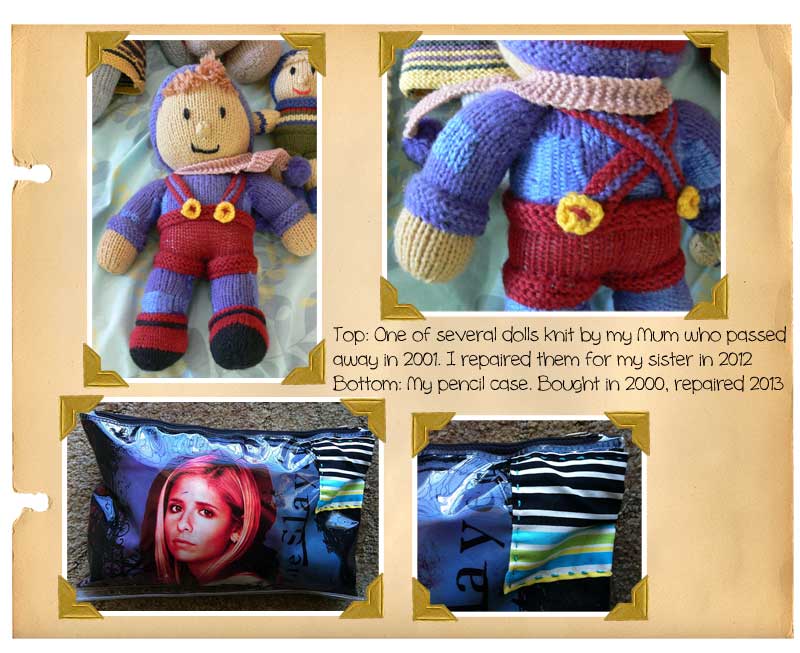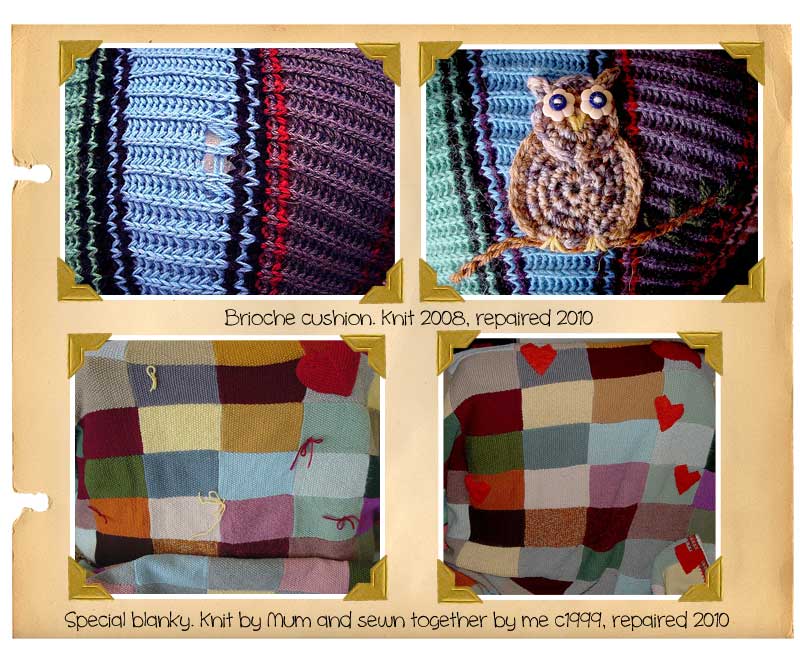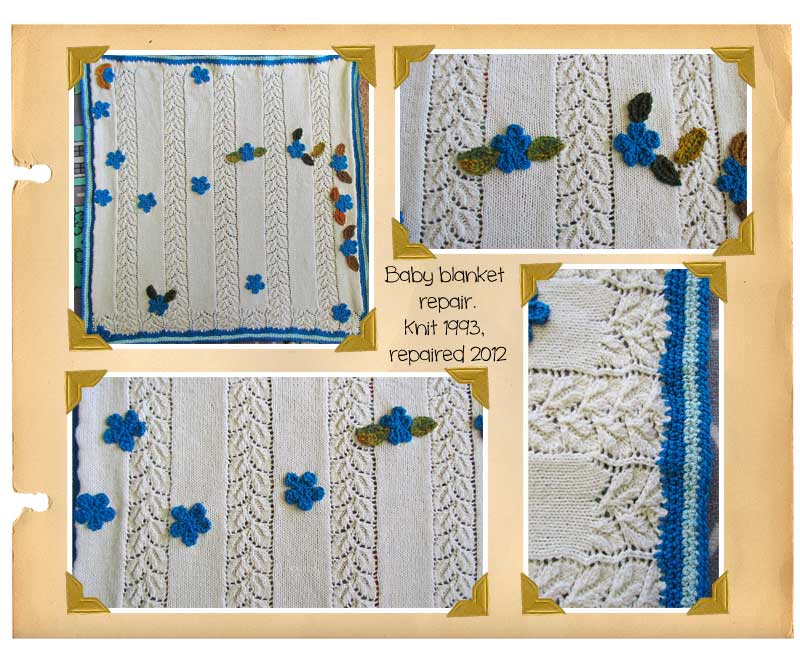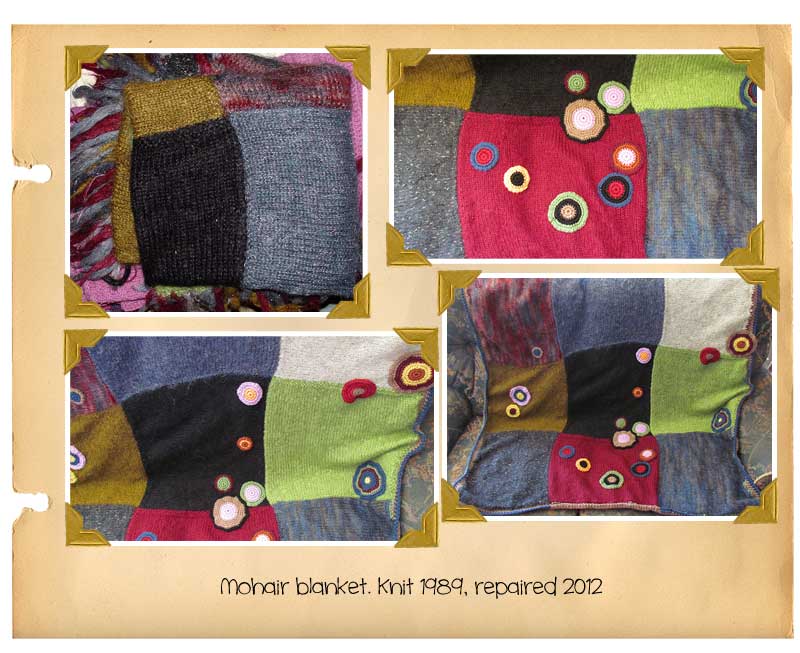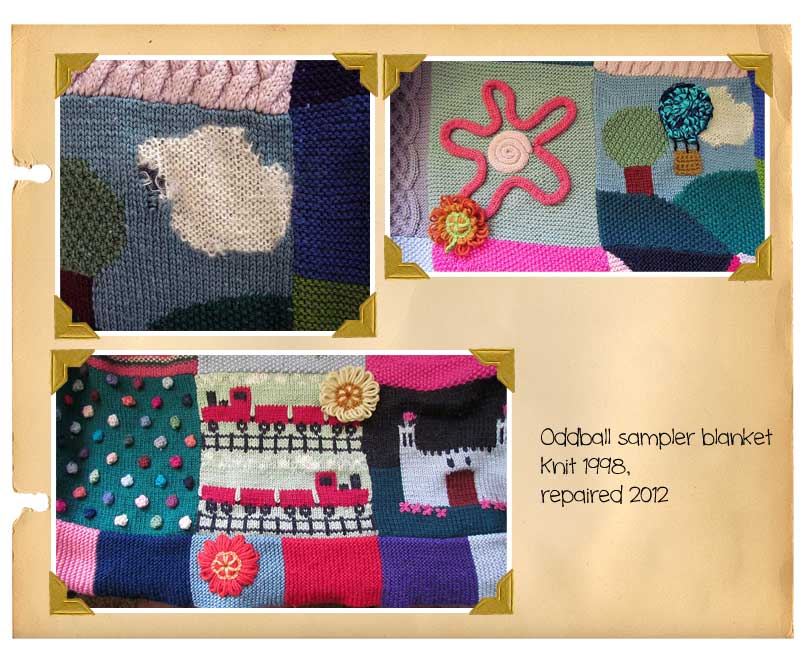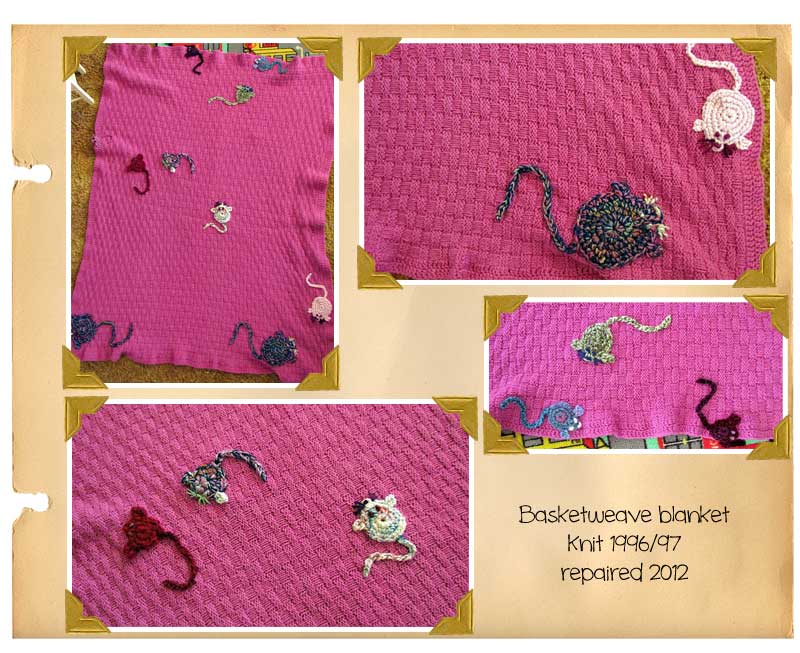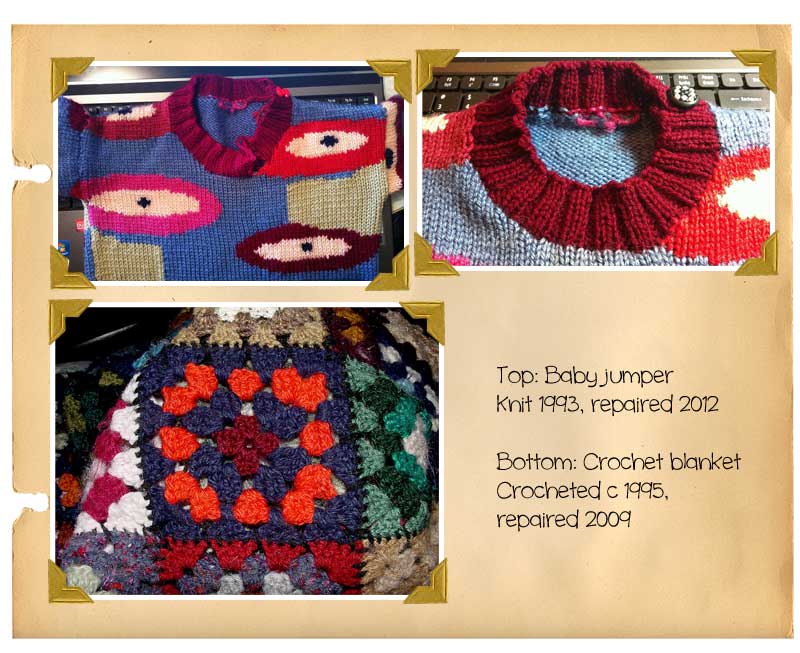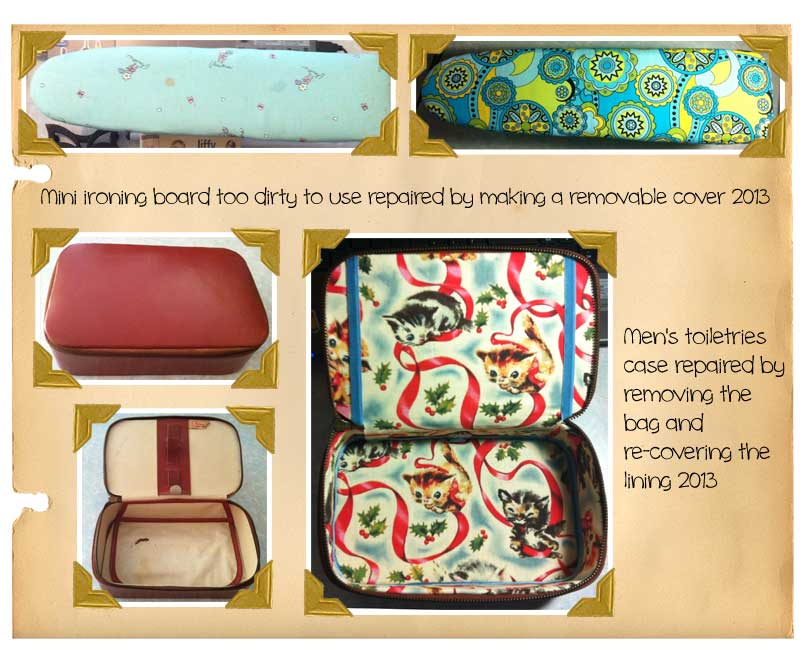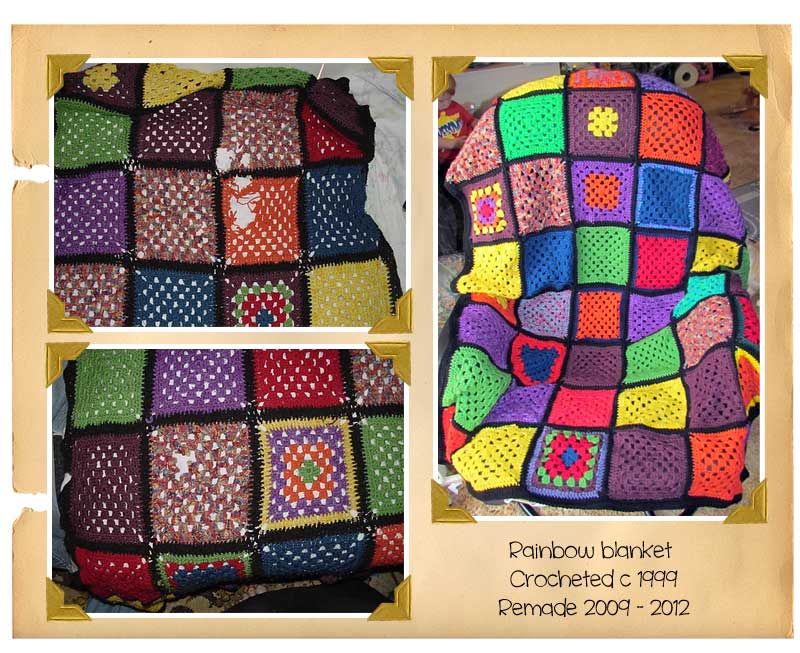OK, more than a little.
Like many knitters, whenever I hear there’s a baby on the way I can’t help breaking out the needles and getting completely carried away. So when I heard that my sister in law was making me a nephew, I thought I’d show my appreciation by making more knitwear than a baby could possibly need in Australia. Luckily, since I have previous experience in knitting for babies, I decided to make them in all sorts of sizes so they wouldn’t all need to be worn in the first 5 minutes :). I’ve just handed them over so now I can tell you about them!
I started with the one pattern that all babies must have at least one of, or it’s obvious that no-one loves them, the baby surprise jacket by Elizabeth Zimmermann. This one is knit from an unknown tweed wool mix that I was kindly given.
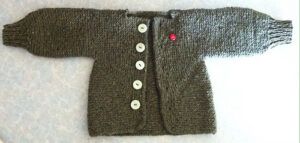
For wearability, the baby surprise jacket is my favourite baby garment. When knit in a single some-what neutral colour, it’s a great basic that can go with a range of outfits. The garter stitch also allows it to stretch as the baby grows so if you knit at a gauge to fit a one year old, it will often still fit for the next cold season.
I like to make sleeves on all the bsj’s I knit full length by picking up stitches and knitting downwards. That way you can lengthen the sleeves whenever needed or easily replace worn out chewed cuffs. Did I mention some babies chew their sleeves? Yep, they do. They have absolutely no respect for knitwear. Luckily they look so damn cute in it they can be forgiven a little slobber.
You can find out all you need to know about knitting the baby surprise jacket here on knitting-and.com and the baby surprise jacket entry in the wiki on Ravelry.com. You’ll need to sign up to see the entry in the Ravelry wiki but it’s free 🙂
The other cardigan I knit is the Aussie baby cardigan by Bev Tilson, from her self published book “Knitting Patterns for Hand Spinners”. I reviewed the book a few years ago, and you could purchase copies from her then. I’m not sure if she has any left but it’s a great book. When it comes to tried and true baby patterns that have withstood the test of generations, you really can’t go past some of the self published books that various hand spinners and guilds publish.
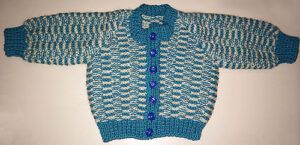
I’ve made the Aussie baby cardigan a couple of times. It’s designed to be knit with handpainted or variegated yarns but I think it looks just as nice with plain colours. Whilst it’s definitely a pain in the bum sewing in the raglan sleeves, it’s worth the effort. When it comes to seaming I almost always use a mattress stitch seam but in this case a careful backstitch is the only way I’ve found to get the raglan seams to look good. Once you know that, though, the raglan seams are no problem. Yes, I did rip the seams out several times before I remembered that’s what I did with the first one. Ahem.
I liked this next pattern so much that I made two. It’s the baby vest from page 9 of Knitting Patterns for Hand Spinners. It’s knit in one piece from the bottom of the front, up over the shoulders and down the back. All you have to do when you’ve finished knitting is mattress stitch the side seams and add an optional crochet border.
I made one in handspun alpaca. I didn’t spin this, it’s handspun my sister gave me.
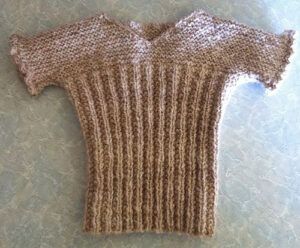
and one in Spotlight Basics dk weight wool. I would recommend using a machine washable wool for baby clothes that are given as gifts, but I’m allergic to one of the resins used to coat some machine wash wools so, with the mum to be’s okay, I used strictly hand wash only yarns as much as possible.
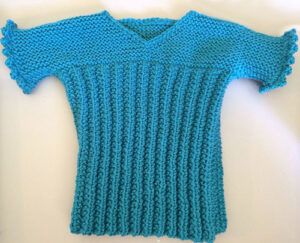
This pattern is going on my “favourite things to knit for babies” list. It will stretch a LOT in both the width, due to the ribbing, and the sleeves, due to the garter stitch. I couldn’t resist adding the suggested crochet shell stitch to the sleeves. It’s just so Victorian (regular visitors will know just how much I love Victorian era knitting patterns)!
To work this particular shell stitch, work a row of double crochet (US single crochet) around the sleeve. Next round: *slip stitch in the first stitch, then work – double crochet (US single crochet), treble (US double crochet), double crochet (US single crochet) all in the second stitch. Repeat from * around.
Knitting any more jumpers would have seemed a bit odd (damn), so I switched to hats at this point with another pattern from “Knitting Patterns for the Hand Spinner”.
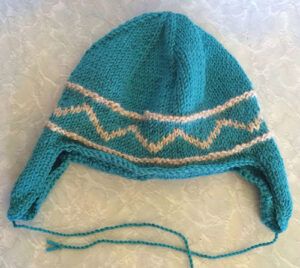
A toddler sized earflap hat knit with the same yarns used on the other projects. There were a couple of errors in this pattern and one change that I made.
Pattern errata:
Work the first 10 sts of the chart only.
After working the chart, work in st st for 2 rows in the main colour, then knit 2 rows in the contrast colour.
Continue with pattern as written.
Changes:
I worked an extra couple of rows of decreases before finishing the top. (Decreased to 8 sts)
If I were to make this again (I just need people to have more babies), I would work the main colour after the flaps and before the contrast colour stripe in k1, p1 ribbing to help stop the curling of the bottom edge.
I’m not sure if Bev still has any copies of the book but, if she still has the same email address, you can contact her to see if she still has any. It’s totally worth the trouble to find it. I could have knit my nephew at least another half dozen things from it but I didn’t want my sister-in-law to think I was a crazy baby stalker. I am but she does’t have to know that 😉
I also knit a knut hat from my free pattern and some handspun, shown very elegantly balanced on my laptop keyboard. I’m pretty sure this was spun from a fibre club sliver from Ewe Give Me the Knits.
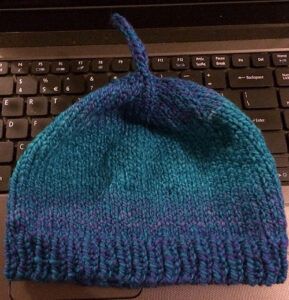
They look rather plain off, but when on a baby they reach new levels of adorableness. Here’s one I prepared earlier (that hat and the baby! He’s about to turn 5 years old).
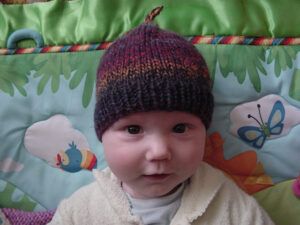
Next is a plain stocking stitch baby blanket with garter stitch border picked up and knit around until I ran out of yarn. Knit with my own handspun made from 150gm of Indian Summer machine wash slivers from Ewe Give Me the Knits. (This is chlorinated machine wash, which I can use).
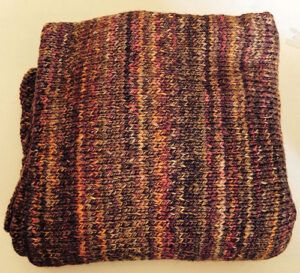
Just a plain stocking stitch square, with stitches picked up all around and worked in garter stitch with double increases at the corners on every second round until I had just enough left to cast off.
Finally, I got to the small things. Well, the really small things. You can’t really call anything other than blankets big when it comes to knitting for babies.
Tiny feet deserve to be warm, and they deserve to be warm in little socks that won’t fall off. These are the “baby legs” from the bouncing baby set in Interweave’s Homespun Handknit. I found socks that look the same in knitting books from the 1800’s but the pattern in Homespun Handknit has crazy additions like needle size and gauge and instructions that don’t make you want to cry.
This pair are knit with my handspun, spun from slivers I bought via ravelry destash, originally from Bee Mice Elf.
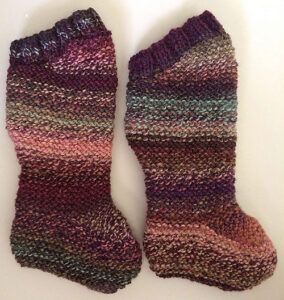
and this pair are knit from Koigu premium merino that was given to me about 15 years ago. Aged stash, I has it.
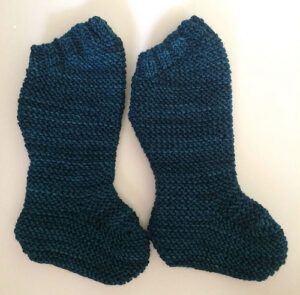
And if you want REALLY tiny knitting for babies, these take mere minutes to make. Baby mittens in 3 month size from my free pattern.
The only thing that grows faster than a newborn baby is a newborn baby’s fingernails. Sure, you can buy Winter onesies with the little cuffs that magically fold over to cover baby’s hands but there’s no knitting involved in doing that, so why would you want to?Despite looking different, these are the same Spotlight yarn and colour I used for the other turquoise projects.
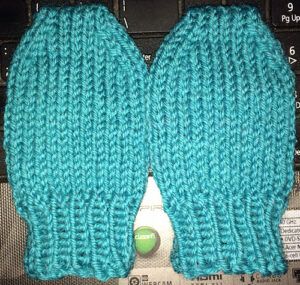
Last but not least (because that would be the mittens), I knit two Spa Day facecloths from three strands of op shopped cotton. I find it handy to have wash cloths that are easily identified as being just for the baby so you don’t accidentally go and wash your face with something that’s just washed a baby bottom. Clean baby bottoms are cute and make you want to kiss them (unless you already know better). Messy baby bottoms are not.
These are a similar colour to the Spotlight wool but in a variegated colourway with white.
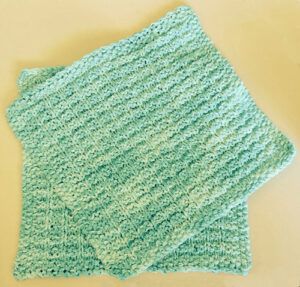
Now if you’ll just excuse me, I have some sewing to do…
, I had learnt so much I could now design my own.
